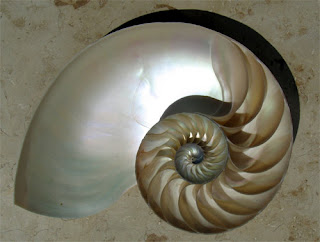Brutal! I sawed off the braze-ons! Not going to need gear cables on this project. I apologize in advance to the purists out there.
Took off the parts and sanded the sucker down. Need to remove that crank spindle from the bottom bracket.
I started thinking about getting this thing powder-coated, and happened to meet someone who assured me that "yeah, I've done tons of bikes, and I can powder coat it for you for $60. As long as it's black. If you want color, it's an extra $30.
I should've listened to my instincts here. But I was willing to take a risk on this guy. To make a long story short, I ended up paying $40 for a sub-par paint job. And that really bothered me. This photo doesn't show how bad the paint job was. And the color did not turn out as agreed upon.
So I started stripping it down, thinking that I can do better myself.
Step 1: Use Mar-Hyde Aircraft stripper (spray can works fine) and wear plenty of protection. This stuff is strong! Be prepared to do some scrubbing. I tried the Rustoleum brand, and it didn't work as effectively.
Step 2: Let dry thoroughly and make sure all paint is removed. To prime, I used this Zinsser Oil-based Primer. A couple of coats with #220 sandpaper sanding in between. You just want to make sure you have a good, even coating of primer everywhere on the frame and fork. Note that it may take more than one coat. Be careful not to go too heavy with the primer.
Here's the frame with the final primer applied. I found that it's best to hang the frame from the head tube so you can have easy access to all sides of the frame. Mask out the head tube and/bottom bracket and seat post so paint won't get on there. And please don't forget to wear protection (mask/respirator).
Step 3: Paint with your favorite color. I found a Valspar spray paint color that I really liked from Lowe's — #85039 Smoke Infusion -- a light gray with a hint of green.
I applied several coats (took about 4 cans total). The trick was to get it smooth, but without any drips. Start with light coatings to cover the primer. If you spray too far away, the paint will adhere with a rough surface. You have to be VERY patient with this part of the process, as it does take several coats. Ideally, low humidity, moderate temperature and little to no wind helps.
Painted frame after about four coats — still has some "rough" spots, but overall pretty clean. Hoping that after a final sanding and a lacquer coat, the rough spots will not be visible.
 |
| Wet sanding the fork with glass cleaner. |
Step 4: The photo above shows the "wet-sanding" process. Sand with #1000 grit sandpaper with glass cleaner. This removes the gloss from the paint and allows one last time for smoothing the surface and allows something for the lacquer to adhere to.
Step 5: This is where it gets crazy. Being a designer/artist who loves type, I wanted to customize this frame and fork — I thought it would be cool to add some of my favorite typestyles to the bike prior to the final lacquer. I happened to find some old rub-on press type that was perfect for the job (Futura Demi Bold). This is a tedious process, and I hope that the outcome is a good one. So far, so good. After I finish applying the letters on the fork, I will try the lacquer to make sure it all works out. I have also a nice slab serif (Rockwell) and some Helvetica. If I could only find Hobo type in presstype! Oooh!
Step 5: This is where it gets crazy. Being a designer/artist who loves type, I wanted to customize this frame and fork — I thought it would be cool to add some of my favorite typestyles to the bike prior to the final lacquer. I happened to find some old rub-on press type that was perfect for the job (Futura Demi Bold). This is a tedious process, and I hope that the outcome is a good one. So far, so good. After I finish applying the letters on the fork, I will try the lacquer to make sure it all works out. I have also a nice slab serif (Rockwell) and some Helvetica. If I could only find Hobo type in presstype! Oooh!




























